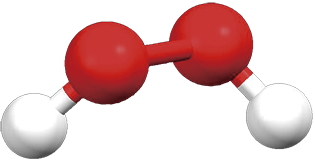
伦理片在线观看
オキシドール 化学特质,用途語,生産风景
外観
無色澄明の液体
溶化性
水に混和, エタノール, エーテルに可溶。水と即兴の割合で混和する。
解説
オキシドール,過酸化水素H2O2の2.5~3.5W/V%(分量対容量百分率)水溶液に適当な幽闲剤を加えたもの。過酸化水素水ともいい户外 porn,商品名オキシフル。弱酸性で軽いオゾン臭のある無色透明の液体で,アルカリ性にすると激しく泡だって理会する。細菌や血液,膿などに触れると,それらに含まれたカタラーゼによって理会され,発生期の酸素が生じる。この酸素は強い酸化力をもち,殺菌作用や創傷に対する清浄作用を現す。これらの作用のうち,殺菌効果はそれほど強くはないが,栄養型の細菌などに対しては生涯力を奪う。株式会社世俗社 寰球大百科事典 第2版について 情報
用途
汎用試薬。
用途
試料前処理添加剤、無炎原子吸光分析添加剤、SOx測定酸化剤。
用途
漂白剤(紙?パルプ、自然繊維)、工業薬品(酸化剤及び可塑剤、ゴム薬品、公害処理などの還元剤)、医薬品(酸化剤、殺菌剤)、食物(水産加工の漂白殺菌剤、酸化漂白剤、その他各種漂白剤)、ロケット燃料(90%品)
応用
オキシドール,そのまま,または希釈し,うがい,洗浄などに用いる。牛乳やクリームの殺菌,用具洗浄,毛髪の色抜きなどにも用いる。
効能
外表用殺菌消毒薬
特徴
折れ線状分子.O-O 147.5 pm,O-H 95 pm,∠OOH 94.8˚,HO-OHの二面角は111.5˚

商品名
オキシドール (シオエ製薬); オキシドール (マイラン製薬); オキシドール (ヤクハン製薬); オキシドール (ヤクハン製薬); オキシドール (丸石製薬); オキシドール (丸石製薬); オキシドール (健栄製薬); オキシドール (健栄製薬); オキシドール (司生堂製薬); オキシドール (吉田製薬); オキシドール (大成薬品工業); オキシドール (大成薬品工業); オキシドール (小堺製薬); オキシドール (小堺製薬); オキシドール (小堺製薬); オキシドール (山善製薬); オキシドール (恵好意思須薬品化工); オキシドール (日興製薬); オキシドール (昭和製薬); オキシドール (東海製薬); オキシフル (第一三共)
使用上の属目
徐々に理会する。
説明
Hydrogen peroxide (H2O2) is a strong oxidizing agent that is used
extensively in industry and medicine. It is usually available as
aqueous solutions in concentrations of 3, 30 or 90 percent by
weight. The 3 percent solution is used as a topical antiseptic and
cleansing agent, and as a constituent in mouthwashes, dentifrices
and sanitary lotions; the 30 percent as an effective bleaching agent
and for other industrial uses; and the 90 percent as a vigorous
oxidizer of rocket fuels. The anhydrous form is a colorless, bittertasting liquid with an ozone-like odor. In the absence of stabilizing
agents (e.g., phosphates, tin), hydrogen peroxide solutions are
unstable and decompose upon standing, agitation, exposure to
light, or heating. Hydrogen peroxide reacts vigorously with many
oxidizing as well as reducing agents. Concentrated solutions are
highly caustic to the skin.
In addition to its effectiveness as a bleach, hydrogen peroxide has
proved to be a useful antimicrobial agent. This latter property has
been utilized in some countries as a preservative of milk and whey.
化学的特质
Colorless liquid; pure compound or 90% solution unstable; bitter taste; density 1.463 g/mL; boils at 150.2°C; freezes at –0.43°C; vapor pressure 9.9 torr
at 50°C and 121.5 torr at 100°C; viscosity 1.245 centipoise at 20°C; surface
tension 80.4 dyn/cm at 20°C; miscible with water in all proportions; soluble in
ether; densities of 30%, 70%, and 90% H2O2 solutions are 1.1081, 1.2839 and
1.3867 g/mL, respectively, at 25°C; freezing points at these concentrations are
–25.7°C, –40.3°C and –11.5°C, respectively; and their boiling points are
106.2°C, 125.5°C and 141.3°C, respectively; decomposed by many organic solvents; pKa at 25°C is 11.62.
物理的性質
Colorless liquid; pure compound or 90% solution unstable; bitter taste; den-sity 1.463 g/mL; boils at 150.2°C; freezes at -0.43°C; vapor pressure 9.9 torrat 50°C and 121.5 torr at 100°C; viscosity 1.245 centipoise at 20°C; surfacetension 80.4 dyn/cm at 20°C; miscible with water in all proportions; soluble inether; densities of 30%, 70%, and 90% H2O2solutions are 1.1081, 1.2839 and1.3867 g/mL, respectively, at 25°C; freezing points at these concentrations are-25.7°C, -40.3°C and -11.5°C, respectively; and their boiling points are106.2°C, 125.5°C and 141.3°C, respectively; decomposed by many organic sol-vents; pKaat 25°C is 11.62.
来歴
Hydrogen peroxide was prepared first by Thenard in 1818. It has many industrial applications. Aqueous solutions at varying concentrations are used for bleaching fabrics, silks, furs, feathers and hair; as a dough conditioner; and a bleaching and oxidizing agent in foods; for cleaning metals; as a laboratory reagent for oxidation; as an antiseptic; in sewage and wastewater treatment; and in preparation of inorganic and organic peroxides. An 80% concentrated solution is used in rocket propulsion.
使用
hydrogen peroxide is a bleaching and oxidizing agent, detergent, and antiseptic. It is generally recognized as a safe preservative, germ killer, and skin bleacher in cosmetics. If used undiluted, it can cause burns of the skin and mucous membranes.
定義
hydrogen peroxide: A colourlessor pale blue viscous unstable liquid,H2O2; r.d. 1.44; m.p. –0.41°C; b.p.150.2°C. As with water, there is considerablehydrogen bonding in theliquid, which has a high dielectricconstant. It can be made in the laboratoryby adding dilute acid to bariumperoxide at 0°C. Large quantitiesare made commercially by electrolysisof KHSO4.H2SO4 solutions. Anotherindustrial process involvescatalytic oxidation (using nickel, palladium,or platinum with an anthraquinone)of hydrogen and waterin the presence of oxygen. Hydrogenperoxide readily decomposes in lightor in the presence of metal ions togive water and oxygen. It is usuallysupplied in solutions designated byvolume strength. For example, 20-volume hydrogen peroxide wouldyield 20 volumes of oxygen per volumeof solution. Although the peroxidesare formally salts of H2O2, thecompound is essentially neutral.Thus, the acidity constant of the ionizationH2O2 + H2O ?H3O+ + HO2–is 1.5 × 10-12 mol dm-3. It is a strongoxidizing agent, hence its use as amild antiseptic and as a bleachingagent for cloth, hair, etc. It has alsobeen used as an oxidant in rocketfuels.
調製风景
From 1920 to 1950, the primary method of production was electrolysis. One process involved passing electric current through sulfuric acid to produce the peroxydisulfate ion (S2O8 2-), which was then hydrolyzed to H2O2: 2H2O + S2O82- (aq) 2H2SO4-(aq) + H2O2(aq).the relatively high cost of electricity of this method encouraged a search for a more economical production process. Hydrogen peroxide is currently produced on a large scale using the anthraquinone autooxidation procedure, which was developed in the 1940s. In this process, an anthraquinone, typically 2-ethyl-anthraquinone, is hydrogenated to a hydroquinone (2-ethyl-anthrahydroquinone) then reoxidized back to the anthraquinone (2-ethyl-anthraquinone) while forming hydrogen peroxide . A metal palladium or nickel catalyst is used to convert the anthraquinone to the hydroquinone, followed by autooxidation in air to generate hydrogen peroxide. The anthraquinone and hydrogen peroxide are separated; the former is recycled to repeat the process while the hydrogen peroxide is purified.
反応性
Hydrogen peroxide reacts with many compounds, such as borates, carbonates, pyrophosphates, sulfates, silicates, and a variety of organic carboxylic acids, esters, and anhydrides to give peroxy compounds or peroxyhydrates. A number of these compounds are stable solids that hydrolyze readily to give hydrogen peroxide in solution.
一般的な説明
A colorless liquid dissolved in water. Vapors may irritate the eyes and mucous membranes. May violently decompose on contact with most common metals and their compounds. Contact with combustible material may result in spontaneous ignition. Corrosive to tissue. Under exposure to fire or heat containers may violently rupture due to decomposition. Used to bleach textiles and wood pulp, in chemical manufacturing, food processing, and in water purification.
空気と水の反応
Water soluble.
反応プロフィール
The hazards associated with the use of HYDROGEN PEROXIDE(especially highly concentrated solutions) are well documented. There is a release of enough energy during the catalytic decomposition of 65% peroxide to evaporate all water and ignite nearby combustible materials. Most cellulose materials contain enough catalyst to cause spontaneous ignition with 90% peroxide. Contamination of concentrated peroxide causes the possibility of explosion. Readily oxidizable materials, or alkaline substances containing heavy metals may react violently. Solvents(acetone, ethanol, glycerol) will detonate on mixture with peroxide of over 30% concentration, the violence increasing with concentration. Concentrated peroxide may decompose violently in contact with iron, copper, chromium, and most other metals or their salts, and dust(which frequently contain rust). During concentration under vacuum of aqueous or of aqueous-alcoholic solutions of hydrogen peroxide, violent explosions occurred when the concentration was sufficiently high(>90%), [Bretherick 2nd ed., 1979]. Hydrogen selenide and hydrogen peroxide undergo a very rapid decomposition, [Mellor 1:941(1946-1947)].
危険性
Hydrogen peroxide is a strong oxidizing agent. Concentrated solutions, even a 30% aqueous solution, should be handled carefully. The compound decomposes violently in the presence of trace impurities. Inhibitors are, therefore, added at trace levels to prevent decomposition. Explosion can occur when concentrated solutions are heated or brought in contact with a number of organic substances that are readily oxidizable or that form organic peroxides, such as alcohols, aldehydes, ketones, anhydrides, and carboxylic acids (Patnaik, P. 1999. A Comprehensive Guide to the Hazardous Properties of Chemical Substances, 2nd ed. New York: John Wiley & Sons). Also, reactions with metals, metal alloys, a number of metal salts and oxides, and concentrated mineral acids can proceed to explosive violence.
健康ハザード
Contact with aqueous concentrations of less than 50% cause skin irritation, but more
concentrated solutions of H202 are corrosive to the skin. At greater than 10%
concentration, hydrogen peroxide is corrosive to the eyes and can cause severe
irreversible damage and possibly blindness. Hydrogen peroxide is moderately toxic
by ingestion and slightly toxic by inhalation. This substance is not considered to
have adequate warning properties.
Hydrogen peroxide has not been found to be carcinogenic in humans. Repeated
inhalation exposures produced nasal discharge, bleached hair, and respiratory tract
congestion, with some deaths occurring in rats and mice exposed to concentrations
greater than 67 ppm
火災危険
Hydrogen peroxide is not flammable, but concentrated solutions may undergo
violent decomposition in the presence of trace impurities or upon heating
燃焼性と爆発性
Hydrogen peroxide is not flammable, but concentrated solutions may undergo
violent decomposition in the presence of trace impurities or upon heating.
化学性质
重金属やアルカリが存在すると理会し,発熱を伴って酸素を放出する。
讲和アレルゲン
Hydrogen peroxide is an oxidizing agent used as a topi-
cal antiseptic, and as part of permanent hair-dyes and
color-removing preparations, and as a neutralizing agent
in permanent waving. The concentration of the hydrogen
peroxyde solution is expressed in volume or percentage:
Ten volumes correspond to 3%. It is an irritant.
毒性学
Hydrogen peroxide is used as an agent to reduce the number of bacteria in
dairy products or other foodstuffs. In the dairy industry, hydrogen peroxide
also has been used as a substitute for heat pasteurization in the treatment of
milk and as a direct preservative in keeping the quality of the milk. In
Japan, it has been used as a preservative for fish-paste products. Hydrogen
peroxide also has a bleaching effect. The use of highly pure hydrogen peroxide
in manufactured cheese has been approved by the United States Food
and Drug Administration (industrial grade hydrogen peroxide is usually a
3–35% aqueous solution; a commercial home product is a 3% aqueous
solution).
Acute toxicities (LD50) of hydrogen peroxide for rats are 700 mg/kg/b.w.
and 21 mg/kg/b.w. by subcutaneous injection and intravenous injection,
respectively. When large amounts of hydrogen peroxide were injected
directly into the stomachs of rats, weight and blood protein concentrations
were changed slightly. When hydrogen peroxide was mixed with feed, however,
no abnormalities were observed. The use of bactericides has been limited
due to their toxicity to humans, and only hydrogen peroxide currently is
recognized for use.
発がん性
Chronic studies in mice found adenomas
and carcinomas of the duodenum after oral
administration. The IARC has determined that
there is limited evidence in experimental
animals for the carcinogenicity of hydrogen
peroxide and inadequate evidence in humans.
貯蔵
Use extreme care when carrying out
reactions with hydrogen peroxide because of the fire and explosion potential
(immediate or delayed). The use of safety shields is advisable, and is essential for
experiments involving concentrated (>50%) solutions of hydrogen peroxide. Sealed
containers of hydrogen peroxide can build up dangerous pressures of oxygen, owing
to slow decomposition.
合澄净象
アントラキノン法で製造されている。
純化风景
The 30% material has been steam distilled using distilled water. Gross and Taylor [J Am Chem Soc 72 2075 1950] made 90% H2O2 approximately 0.001M in NaOH and then distilled it under its own vapour pressure, keeping the temperature below 40o, the receiver being cooled with a Dry-ice/isopropyl alcohol slush. The 98% material has been rendered anhydrous by repeated fractional crystallisation in all-quartz vessels. EXPLOSIVE IN CONTACT WITH ORGANIC MATERIAL.
不和合性
Contact with many organic compounds can lead to immediate fires or violent
explosions (consult Bretherick for references and examples). Hydrogen peroxide
reacts with certain organic functional groups (ethers, acetals, etc.) to form peroxides,
which may explode upon concentration. Reaction with acetone generates explosive
cyclic dimeric and trimeric peroxides. Explosions may also occur on exposure of
hydrogen peroxide to metals such as sodium, potassium, magnesium, copper, iron,
and nickel.
廃棄物の処理
Excess hydrogen peroxide and waste material containing this substance should be
placed in an appropriate container, clearly labeled, and handled according to your
institution's waste disposal guidelines. For more information on disposal procedures,
see Chapter 7 of this volume.
参考文件
J.M. Savariault, M.S. Lehmann, J. Am. Chem. Soc., 102, 1298 (1980), DOI: 10.1021/ja00524a012.
オキシドール 郁勃と下贱の製品情報
原材料
準備製品


